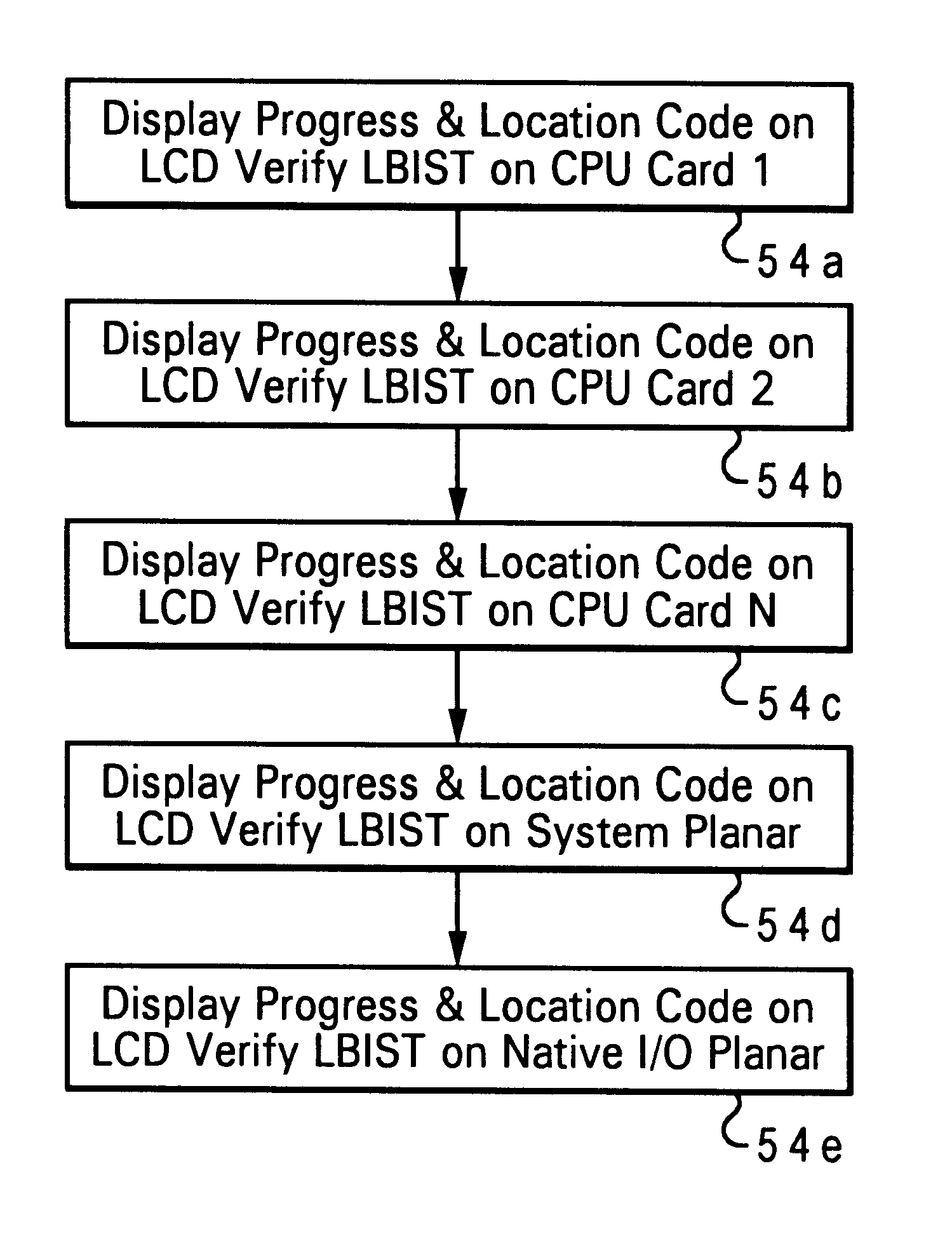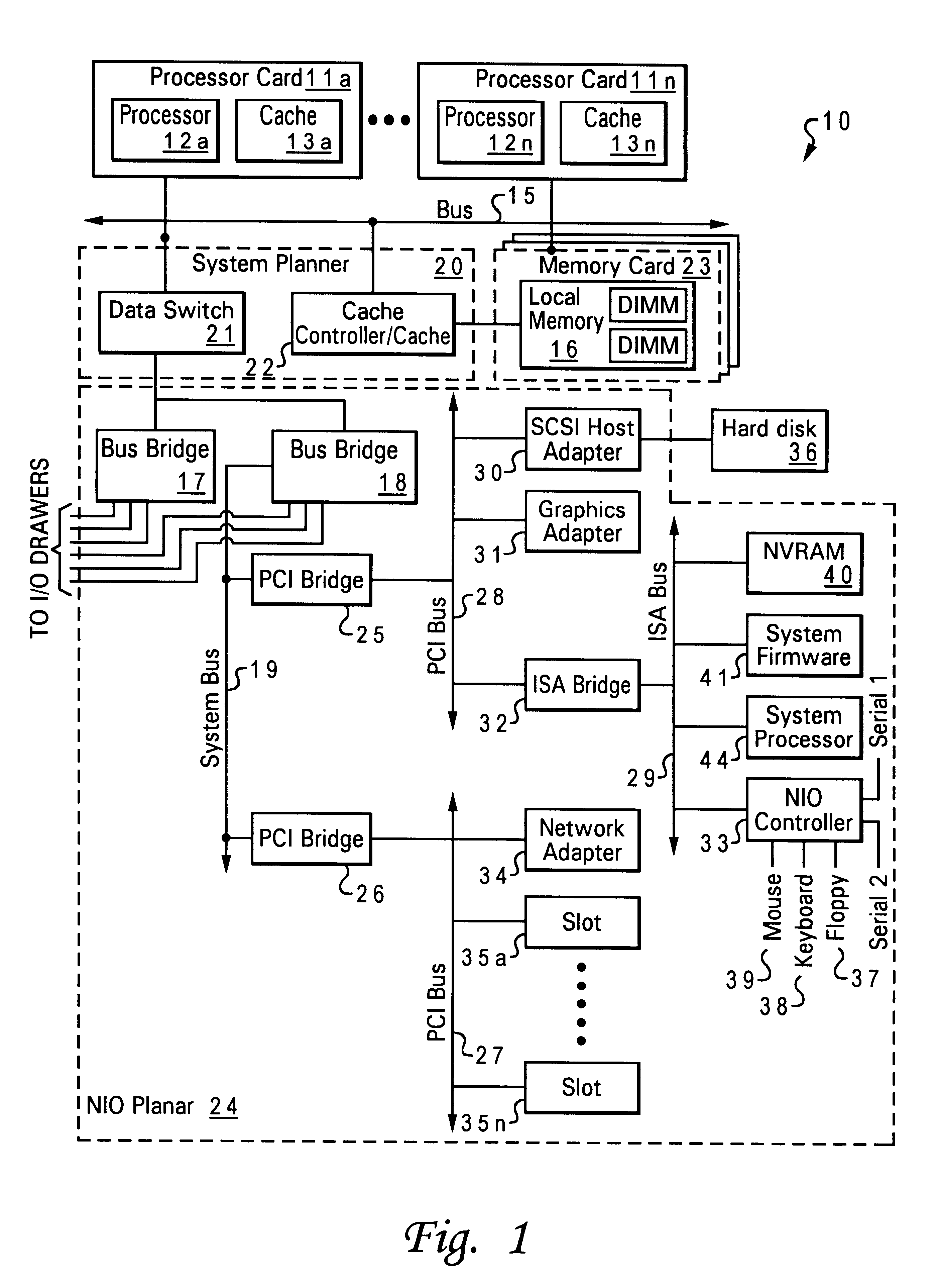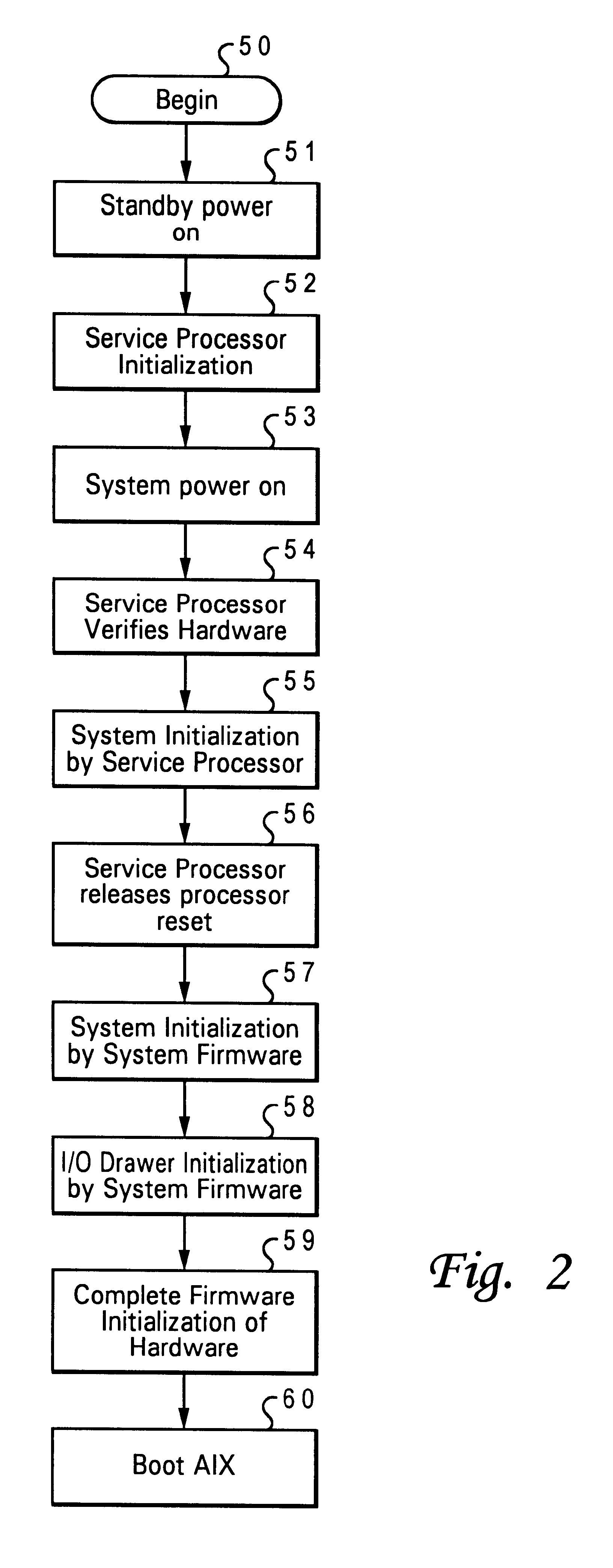Method and apparatus for locating and displaying a defective component in a data processing system during a system startup using location and progress codes associated with the component
- Summary
- Abstract
- Description
- Claims
- Application Information
AI Technical Summary
Problems solved by technology
Method used
Image
Examples
Embodiment Construction
Referring now to the drawings and in particular to FIG. 1, there is depicted a block diagram of an illustrative embodiment of a data processing system with which the present invention may advantageously be utilized. As shown, a data processing system 10 includes processor cards 11a-11n. Each of processor cards 11a-11n includes a processor and a cache memory. For example, processor card 11a contains a processor 12a and a cache memory 13a, and processor card 11n contains a processor 12n and a cache memory 13n.
Processor cards 11a-11n are connected to a main bus 15. Main bus 15 supports a system planar 20 that contains a data switch 21 and a memory controller / cache 22. Memory controller / cache 22 supports a memory card 23 that includes a local memory 16 having two dual in-line memory modules (DIMMs).
Data switch 21 connects to a bus bridge 17 and a bus bridge 18 located within a native I / O (NIO) planar 24. As shown, bus bridge 18 connects to peripheral components interconnect (PCI) bridge...
PUM
 Login to View More
Login to View More Abstract
Description
Claims
Application Information
 Login to View More
Login to View More - R&D
- Intellectual Property
- Life Sciences
- Materials
- Tech Scout
- Unparalleled Data Quality
- Higher Quality Content
- 60% Fewer Hallucinations
Browse by: Latest US Patents, China's latest patents, Technical Efficacy Thesaurus, Application Domain, Technology Topic, Popular Technical Reports.
© 2025 PatSnap. All rights reserved.Legal|Privacy policy|Modern Slavery Act Transparency Statement|Sitemap|About US| Contact US: help@patsnap.com



